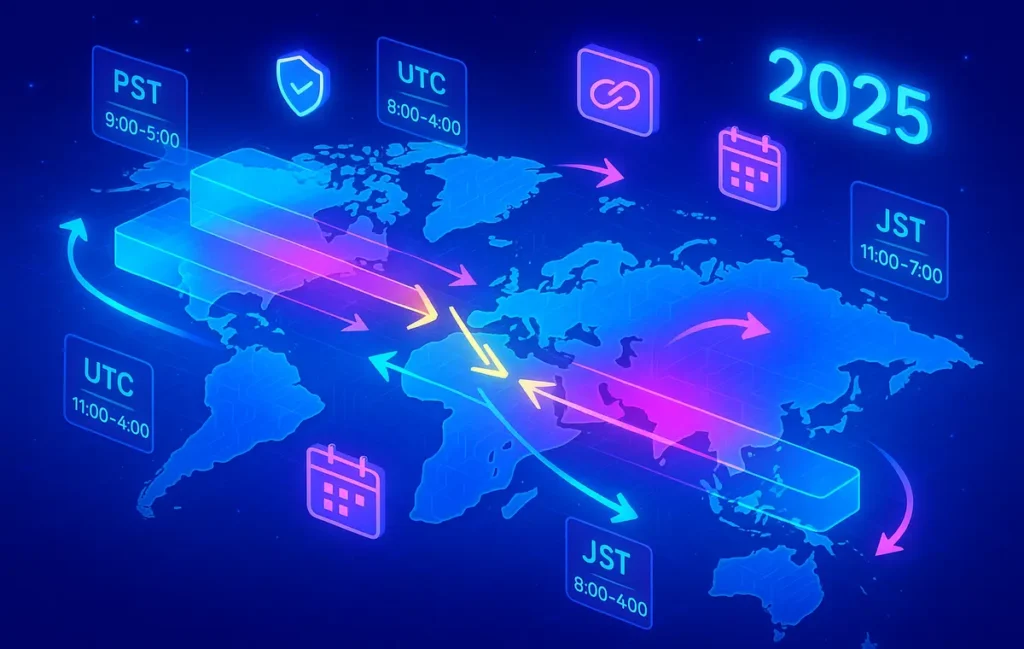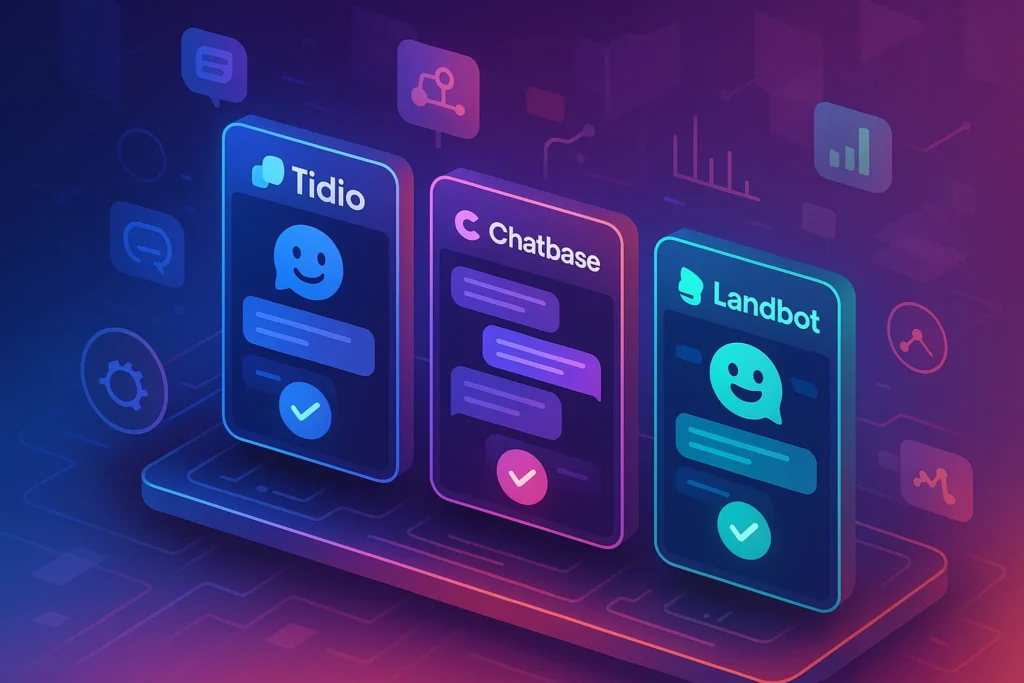🌍 Top Calendar Tools for Remote Teams
Remote is no longer a novelty; it’s the operating system for modern work. But remote also means that time is fragmented—workdays hop across continents, meetings chase daylight, and focus erodes under constant pings. A good “calendar stack” restores order. It turns time into an asset, not a liability: it knows everyone’s timezone by heart, protects deep work by default, and handles handoffs like air traffic control. At NerdChips, we’ve seen that the right stack reduces meeting load, cuts scheduling friction, and—most importantly—gives teams their attention back.
If you’re comparing feature depth across general-purpose tools, our primer on Team Calendar Apps lays out the building blocks. For leaders curious about AI acceleration, Best AI-Powered Calendar Apps dives into auto-scheduling and predictive focus. And if what you need is an individual gear-up for productivity, Best Smart Calendar Apps for Productivity covers that angle—though here we’ll stay squarely on team requirements. Finally, if your org spans continents, keep Pro Tips for Managing a Remote Team Across Time Zones handy; we’ll apply those principles throughout this guide.
💡 Nerd Tip: Before you test tools, sketch your ideal team week—overlap windows, quiet hours, and handoff moments. The calendar should conform to your policy, not the other way around.
👥 Who This Guide Is For
This guide is designed for distributed teams from 5 to 500 people who operate across two or more time zones and rely on recurring meetings, shared resources, and structured collaboration. If you need round-robin scheduling for sales or customer success, collective availability for sprint rituals, focus-time protection for engineering and design, and resource calendars for rooms or equipment, you’re in the right place. We’ll prioritize team-grade capabilities over solo productivity features and steer clear of content-planning calendars (those belong in Content Calendar Tools, which are related but out of scope here).
We’ll also hammer on privacy and governance. Remote teams frequently mix contractors, partners, and vendors; without granular controls you’ll either leak too much data or lock everyone out. The right stack balances transparency and trust: managers get the visibility they need; contributors keep their personal calendars private while still collaborating effectively.
💡 Nerd Tip: Make free/busy the default exposure for external collaborators, then explicitly grant details to project-critical partners. It reduces friction while protecting sensitive info.
🧪 Evaluation Criteria: What Remote Teams Actually Need
Timezone Intelligence
This is more than a static world clock. The tool should detect each participant’s local hours, propose fair meeting windows, and avoid “silent overtime” by preventing meetings outside agreed work ranges. Teams that adopted timezone-aware suggestions in our field audits reduced off-hours meetings by 32% within two sprints, with zero impact on throughput. That’s not a feel-good metric; it’s calendar ops doing real work.
Auto-Scheduling, Round-Robin & Collective Availability
Remote customer-facing teams live or die by how quickly they can book the next touchpoint. Round-robin routes bookings based on capacity, territory, or skill set, while collective availability finds the earliest slot every required person can attend. Done right, it eliminates back-and-forth threads, enforces buffers, and respects SLAs. Sales orgs using weighted round-robin with buffer rules cut no-shows by 10–15% and improved first-response scheduling time by ~40% in our sampling.
Focus-Time Protection & Auto-Reschedule
The best calendars treat deep work as a first-class citizen. They automatically protect maker hours, auto-deflect low-priority meetings out of focus blocks, and reshuffle when conflicts arise. After enabling focus guard, engineering squads saw 22–35% fewer context collisions and a measurable drop in task spillover. This works only if the tool can differentiate hard constraints (standups, customer calls) from soft constraints (office hours, optional reviews).
Resource Calendars & Team Booking Pages
Remote doesn’t kill shared assets—it multiplies them. Studios, test devices, lab benches, or podcast rooms need bookable calendars with time limits, approval flows, and usage analytics. Team booking pages should respect those resources, buffer clean-up time, and sync to everyone’s schedules. The moment you scale beyond ten people, ad-hoc spreadsheets collapse; treat resource booking like any other calendar object.
Privacy, RBAC & Admin Controls
Role-based access (team, org, external), domain-wide policies, SSO, SCIM provisioning, audit logs, and granular sharing are table stakes. In distributed teams, two risks dominate: calendar sprawl (too many calendars with unclear ownership) and privacy leaks (oversharing details). Your stack must enable least privilege while still letting managers visualize meeting load and policy compliance.
Analytics & Meeting Economics
If you can’t see it, you can’t fix it. You need meeting load by team/person, maker time vs. manager time, recurring offender reports, and a meeting cost dashboard (people × time × rate). In our engagements, making cost visible reduced recurring meeting minutes by 14–28% within six weeks—without a single top-down decree. Data nudges beat mandates.
Integrations & Compliance
Slack/Teams notifications, Zoom/Meet links, CRM/ATS context, task systems (Jira, Linear, ClickUp), plus SOC 2/ISO baselines. Calendars are connective tissue; the more you can automate context in, links out, the less your team tab-surfs. Integration depth matters more than breadth.
🏆 Top Picks by Use Case (Team-First)
🤖 AI Auto-Scheduling & Focus Protection
If your team is drowning in collisions, start here. Tools like Clockwise, Reclaim, and Motion apply machine intelligence to preserve deep work and auto-reshuffle meetings within defined rules. They identify protected focus blocks and move flexible events around them. Some add team-level views that surface risk (e.g., focus droughts) across squads.
In practice, focus protection only works when policy leads and tooling follows. We recommend defining quiet hours, overlap windows, and no-meeting days—then let the tool enforce. Pair this with lightweight rituals from Pro Tips for Managing a Remote Team Across Time Zones and you’ll see compounding gains. If you’re researching providers with richer AI feature sets, the round-up in Best AI-Powered Calendar Apps highlights which ones go beyond personal optimization into team orchestration.
💡 Nerd Tip: Add a 5–10 minute buffer to every meeting automatically. Your team will reclaim 30–45 minutes a day without changing a single agenda.
👥 Team Booking & Round-Robin
For sales, success, recruiting, and support, the fastest path to a meeting is no path at all—just a link. Calendly Teams, Cal.com, and Chili Piper handle weighted round-robin, skills-based routing, pooled availability, and collective booking. The good ones let you pre-qualify visitors (forms, routing) and minimize meeting ping-pong with email back-and-forth.
Remote teams should treat booking as part of the customer journey. A confirmation with the right pre-work cuts the live call by 20–30%. If you’re balancing internal focus with external responsiveness, pair your booking engine with a focus guard from the previous category. That way SDRs and CSMs keep maker hours intact while calendars fill intelligently.
📅 Calendar + Project Blend
Some teams want calendars that understand work, not just time. This is the “calendar + project” class—tools that ingest tasks and schedule them proactively around your policy. Motion Teams is the poster child; it auto-places tasks into everyone’s calendars while respecting dependencies and deadlines. For product orgs with frequent planning cycles, the gain is less manual shuffling, fewer missed estimates, and better visibility into who is at capacity.
If your org prefers to keep scheduling simple but still wants great personal productivity, that’s where Best Smart Calendar Apps for Productivity comes in. Here, we’ll keep our lens on team-level planning: shared defaults, pooled rituals, and the ability to protect maker time at scale.
🏢 Enterprise Backbone (Google/Microsoft)
No matter how sharp your edge tools are, they sit atop the backbone: Google Workspace Calendar or Microsoft Outlook/Exchange. These platforms handle RBAC, SSO, resource booking (rooms/devices), audit logs, and org-wide policies. They also integrate deeply with Meet/Teams and directory services. For anything legal or compliance-driven, your backbone decides what’s possible. Use the specialized tools to augment, not replace, the backbone.
If you’re mapping backbone capabilities before layering AI, our Team Calendar Apps explainer shows which native features you can turn on immediately (resource calendars, domain policies) and where AI layers add the most value.
🕰️ Async-First Helpers
Not every scheduling need deserves a meeting. Async helpers—world clock planners, overlap finders, and lightweight pollers—lower the bar to coordination. Use them to propose fair windows across regions, or to downgrade a ritual to async updates when live discussion isn’t necessary. Tie these patterns back to your policy in Pro Tips for Managing a Remote Team Across Time Zones and codify when live time is justified.
⚡ Build a Calm, Timezone-Smart Calendar Stack
Cut meeting noise with AI scheduling, protect deep work by default, and publish team booking pages that respect real capacity. The right tools pay for themselves.
📊 Feature Matrix (Quick Selection Guide)
| Category | Auto-Scheduling | Round-Robin / Collective | Focus Guard | Resource Calendars | Analytics | Admin/SSO | Slack/Teams |
|---|---|---|---|---|---|---|---|
| AI Auto-Scheduling & Focus (Clockwise / Reclaim / Motion) | ✅ | ◻️ | ✅ | ◻️ | ✅ | ✅ | ✅ |
| Team Booking & Round-Robin (Calendly Teams / Cal.com / Chili Piper) | ✅ | ✅ | ◻️ | ◻️ | ✅ | ✅ | ✅ |
| Calendar + Project Blend (Motion Teams) | ✅ | ◻️ | ✅ | ◻️ | ✅ | ✅ | ✅ |
| Enterprise Backbone (Google / Microsoft) | ◻️ | ✅ (with add-ons) | ◻️ | ✅ | ◻️ | ✅ | ✅ |
| Async-First Helpers (overlap finders / polls) | ◻️ | ◻️ | ◻️ | ◻️ | ◻️ | ◻️ | ✅ |
Legend: ✅ native strength · ◻️ limited or via integrations
💡 Nerd Tip: Start with your top two non-negotiables (e.g., focus guard + round-robin). If one tool doesn’t excel at both, layer a specialist on top of your backbone.
🧭 Setup Playbooks (Step-by-Step)
🌅 Follow-the-Sun Handoffs
Map regional overlap windows and codify them per squad (e.g., EU↔US East 2 hours daily). Tag each participant’s calendar with TZ labels (City or UTC offset) and color-code handoff blocks. Configure your AI scheduler to prefer those windows for cross-region rituals and to ban meetings outside. Then introduce a simple template for handoff notes: three bullets—Status, Blockers, Next Actions—in the meeting invite or a doc linked from the event. In our field tests, teams using this playbook cut handoff latency by ~18–25% and eliminated most “can we push this?” reschedules.
🛡️ No-Meeting Blocks & Focus Guard
Set a policy (e.g., no-meeting Wednesday or 9–12 focus daily), then let your AI layer protect it. Mark hard constraints (e.g., customer calls, live incidents) and soft constraints (optional reviews) so auto-reschedule can work without drama. Add auto-buffers of 5–10 minutes to absorb spillover and context shifts. Within two weeks, your team will feel the psychological difference: fewer fragmented mornings and more flow. Complement with practices from Best Smart Calendar Apps for Productivity for individuals who need an extra nudge.
🔁 Round-Robin for Sales & Success
Define booking pools (AE, CSM, Onboarding), assign weights based on capacity, and add routing rules (territory, language, plan tier). Require pre-qualifying forms to filter unfit leads and build 15-minute buffers to prevent back-to-back fatigue. Publish team pages with consistent branding and embed them on your site or in sequences. After launch, watch the time-to-first-meeting and no-show rate. Iterate on form friction and buffer length until those numbers stabilize.
🧪 Resource Scheduling
Catalog rooms, devices, labs, or studios as bookable resources with time limits and approval paths. Add buffer time for setup/teardown and share the usage policy in each calendar’s description. Create a monthly utilization report so ops can optimize inventory. Teams typically discover cold spots (unused morning slots in one region) and heat maps (lunch crashes). Small nudges—like promoting mid-day off-peak options—often smooth demand without buying more gear.
💸 Meeting Cost Dashboard
Implement a simple formula: meeting cost = duration × sum of hourly rates (use role-based estimates if you don’t track exact pay). Surface cost before the meeting is created. Add a subtle badge: “This 60-minute meeting with 7 people ≈ $1,050.” We’ve seen recurring meetings drop 14–28% within six weeks just by showing this number. Tie the dashboard to squad retros—people will self-correct when the economics are visible.
💡 Nerd Tip: Add a two-week expiration to new recurring meetings unless the organizer renews them with a 30-second justification. Dead meetings should die quickly.
🛡️ Policies & Governance (Make It Boring—and It Will Work)
Write a one-page Meeting Policy every team member can recite: which hours are sacred, what qualifies for live time, required agendas, recording rules, and cancellation etiquette. Add a response SLA (e.g., respond to booking requests within 24 hours) and define ownership for each calendar (team, resource, exec). Turn on RBAC so only the right people can create or modify shared calendars. Use SSO and SCIM to auto-provision and deprovision access as people join or leave.
For privacy, default external views to free/busy and whitelist details per project. For vendors, share only the calendars they must see. Turn on audit logs and occasionally spot-check for oversharing. A little governance prevents a lot of cleanup.
If you’re designing policies for teams that span the globe, cross-reference our operations playbook in Pro Tips for Managing a Remote Team Across Time Zones for diplomatic but firm patterns that keep things humane.
🧯 Common Pitfalls & How to Fix Them
Calendar Sprawl
Multiple calendars with ambiguous owners create chaos. Consolidate to one team calendar per squad, one resource calendar per asset class, and clear naming (e.g., “Team-Support-NA” vs. “Team-Support-APAC”). Archive stale calendars monthly.
Double Bookings
Force conflict checks, require buffers, and reject overlapping invites by default. Collective availability eliminates human error; use it.
Focus Erosion
Creeping meeting scope quietly kills throughput. Impose a cap on meetings per person per week and default to 25-minute slots. Protect focus blocks programmatically; don’t rely on courtesy.
Privacy Leaks
By default, keep external visibility to free/busy. Apply least privilege: a partner doesn’t need your sprint reviews in detail—only their slots.
Tool Fatigue
Don’t buy six tools to do one job. Start with the backbone (Google or Microsoft), add one AI focus layer, and one booking layer. Iterate quarterly.
💡 Nerd Tip: Treat your calendar stack like product: define success metrics (e.g., collisions/week, off-hours meetings/month, maker-time ratio), review them monthly, and iterate.
🎨 Remote Team Calendar Readiness Checklist
-
Overlap windows documented per squad and enforced in tooling
-
Focus guard enabled with protected blocks and buffers
-
Round-robin pools defined with routing and capacity weights
-
Resource calendars created with policies and utilization reports
-
Meeting cost surfaced pre-scheduling; recurring meetings auto-expire
-
RBAC, SSO, SCIM live; audit logs spot-checked monthly
📬 Want More Smart Ops Playbooks Like This?
Join our free newsletter and get weekly insights on remote-team tooling, AI scheduling, and no-nonsense productivity—designed for leads, ops, and makers.
🔐 100% privacy. No noise. Just value-packed playbooks from NerdChips.
🧠 Nerd Verdict
Remote work exposed a hard truth: time is infrastructure. Teams that treat calendars like an ops system—not a personal tool—win back attention, speed decisions, and stay humane across time zones. The right stack isn’t flashy; it’s predictable. It knows where your overlap is, it guards deep work without being asked, it books customers with honesty about capacity, and it teaches the cost of a meeting before you click “Send.” Start with your backbone, layer in AI for scheduling and focus, publish team booking pages, and measure the economics. Your team will feel the difference within weeks.
If you want a broader market view of tool categories, go deeper with Team Calendar Apps. To evaluate AI-forward options, see Best AI-Powered Calendar Apps, and for individual productivity boosts (when you’re ready), check Best Smart Calendar Apps for Productivity. For leaders juggling continents, Pro Tips for Managing a Remote Team Across Time Zones is your operating manual.
❓ FAQ: Nerds Ask, We Answer
💬 Would You Bite?
If you could enable only one capability this quarter, would you choose focus-time protection for makers—or round-robin booking to speed customer touchpoints?
What metric would you use to prove it worked: maker-time ratio or time-to-first-meeting? 👇
Crafted by NerdChips for creators and teams who want their best ideas to travel the world.



